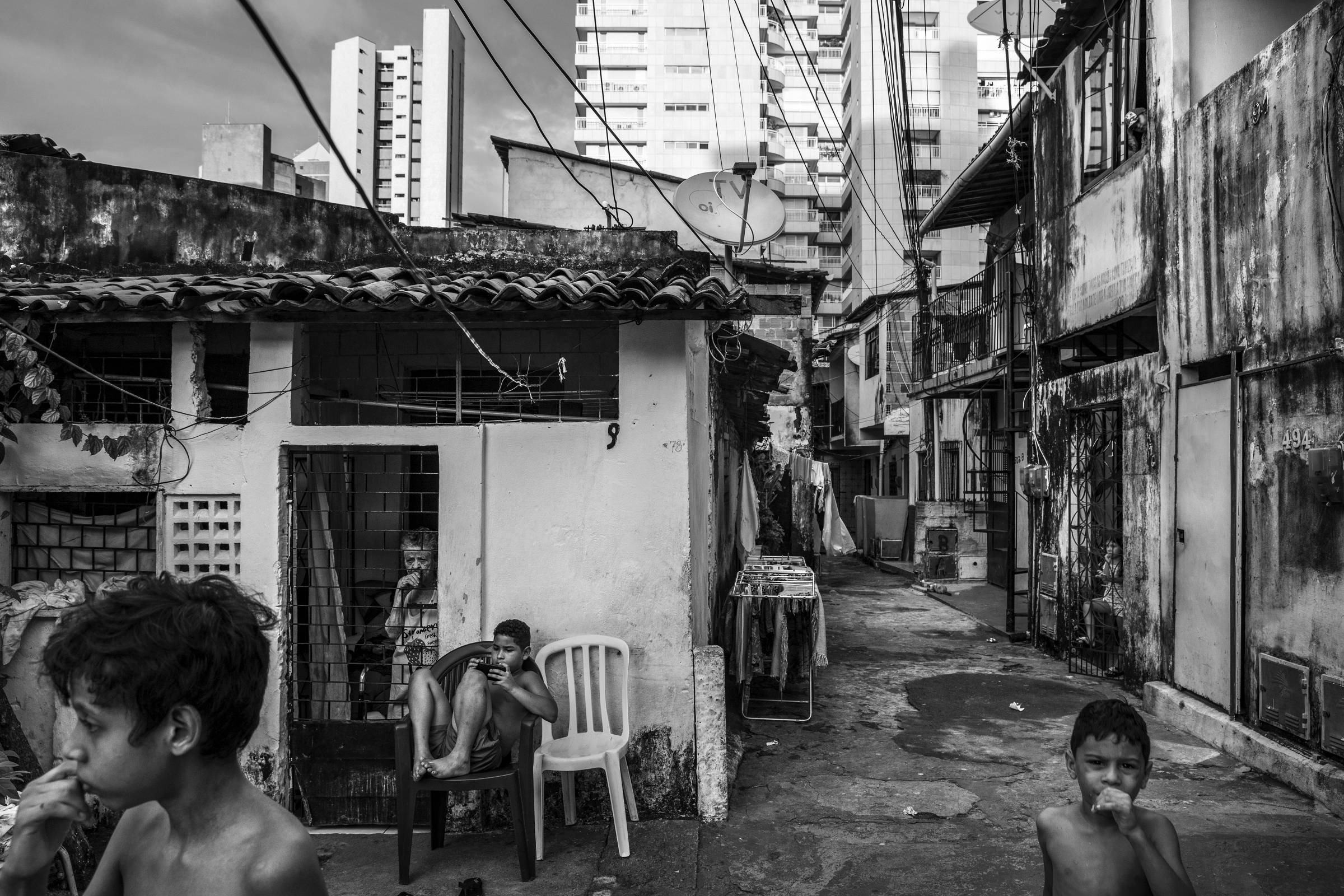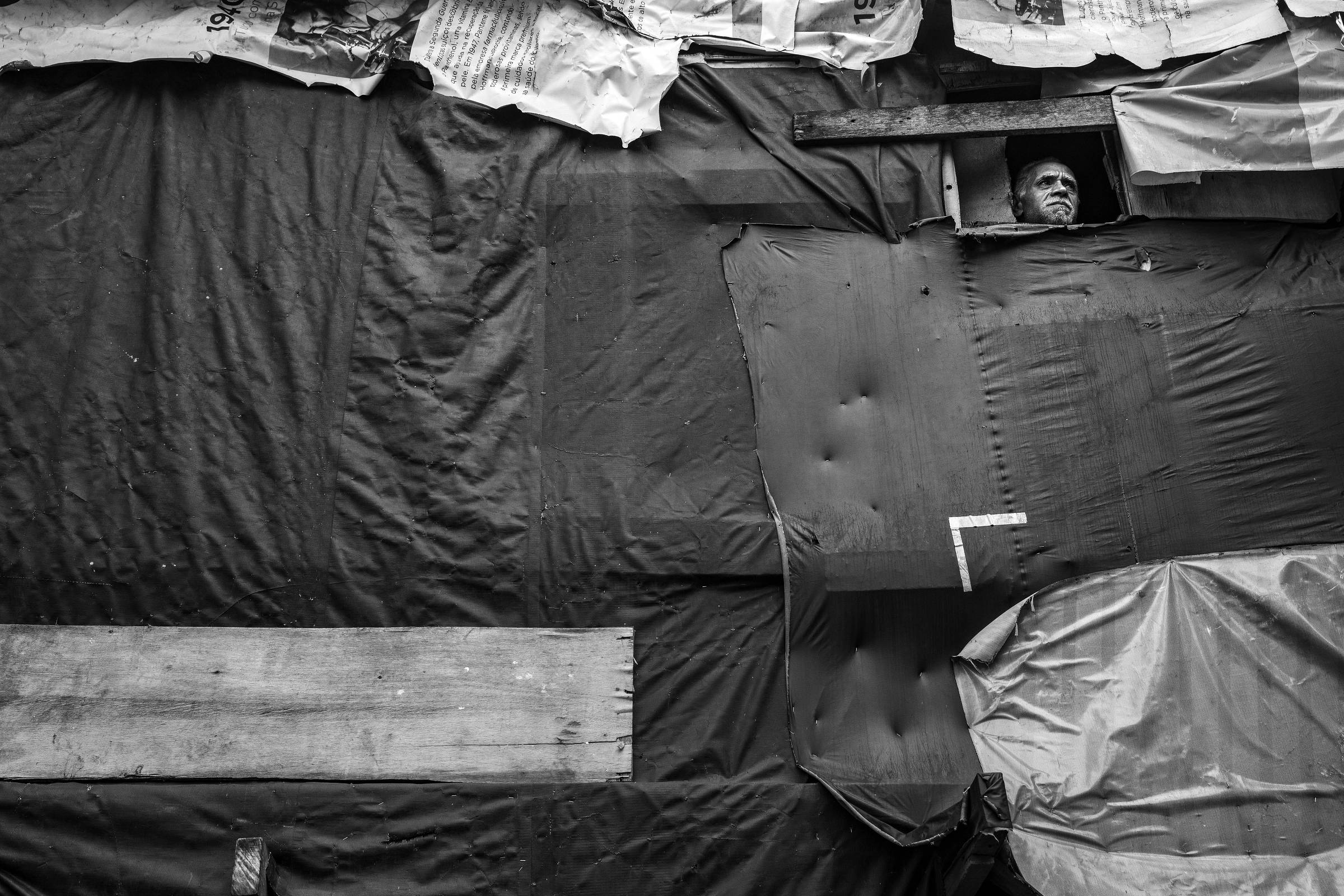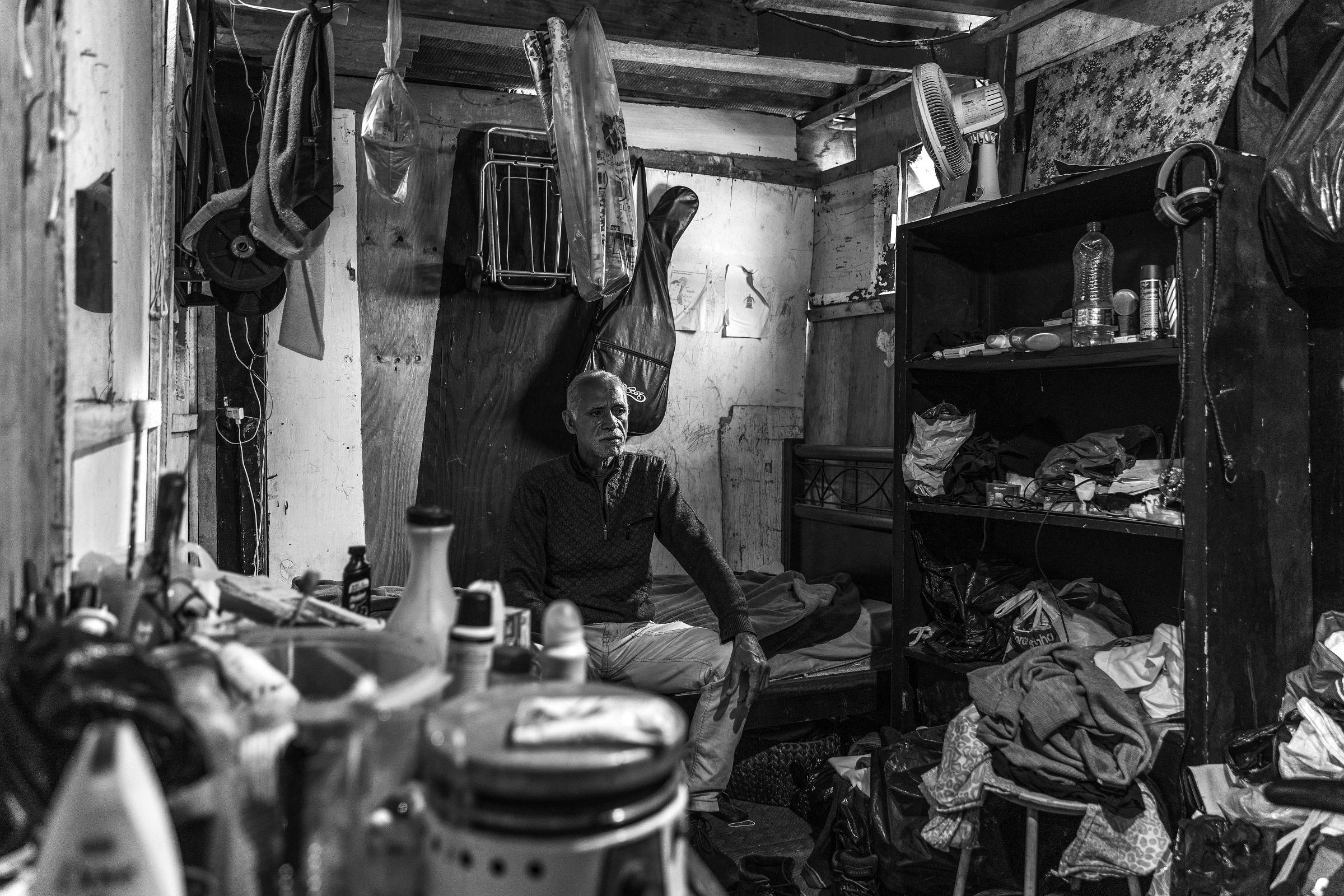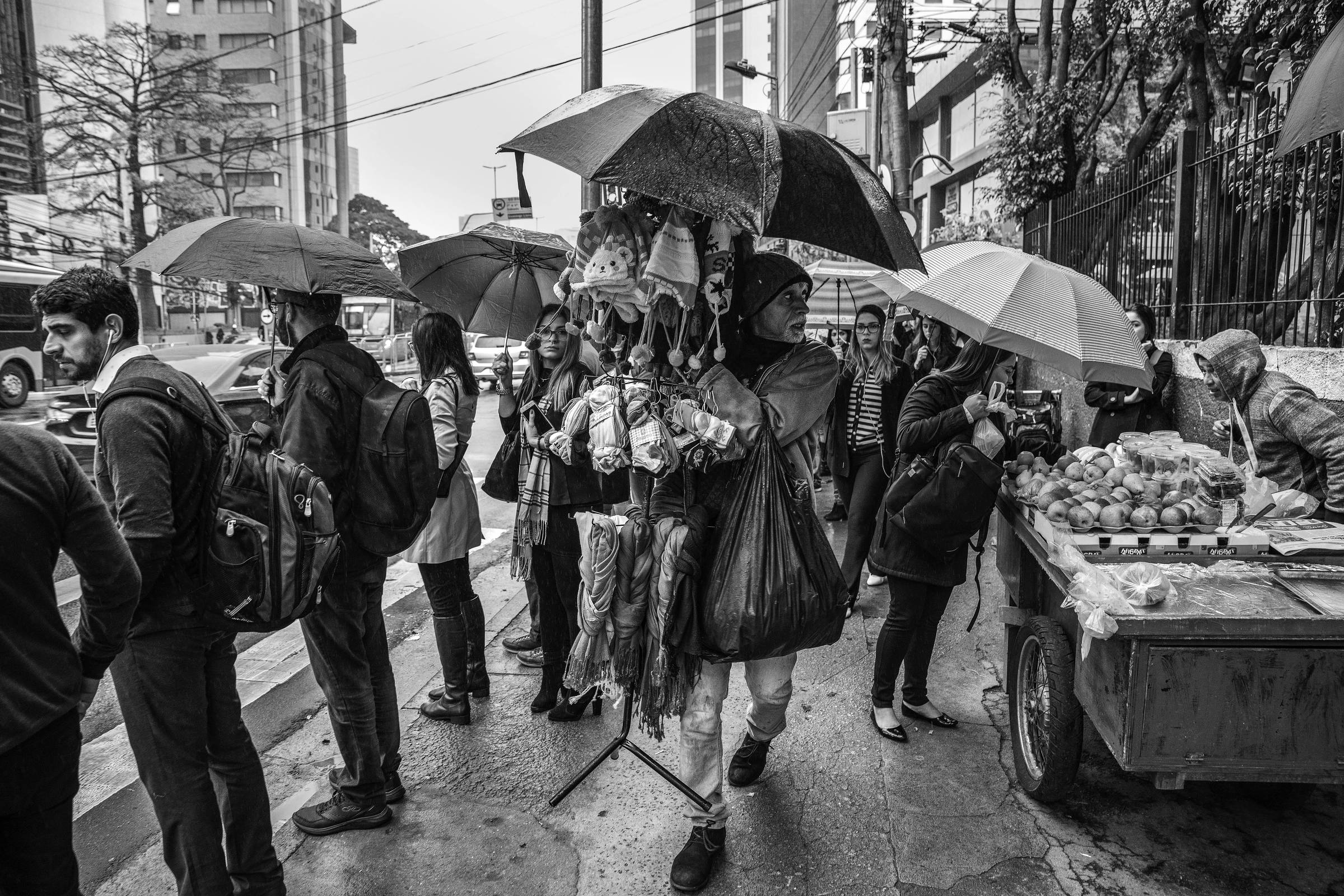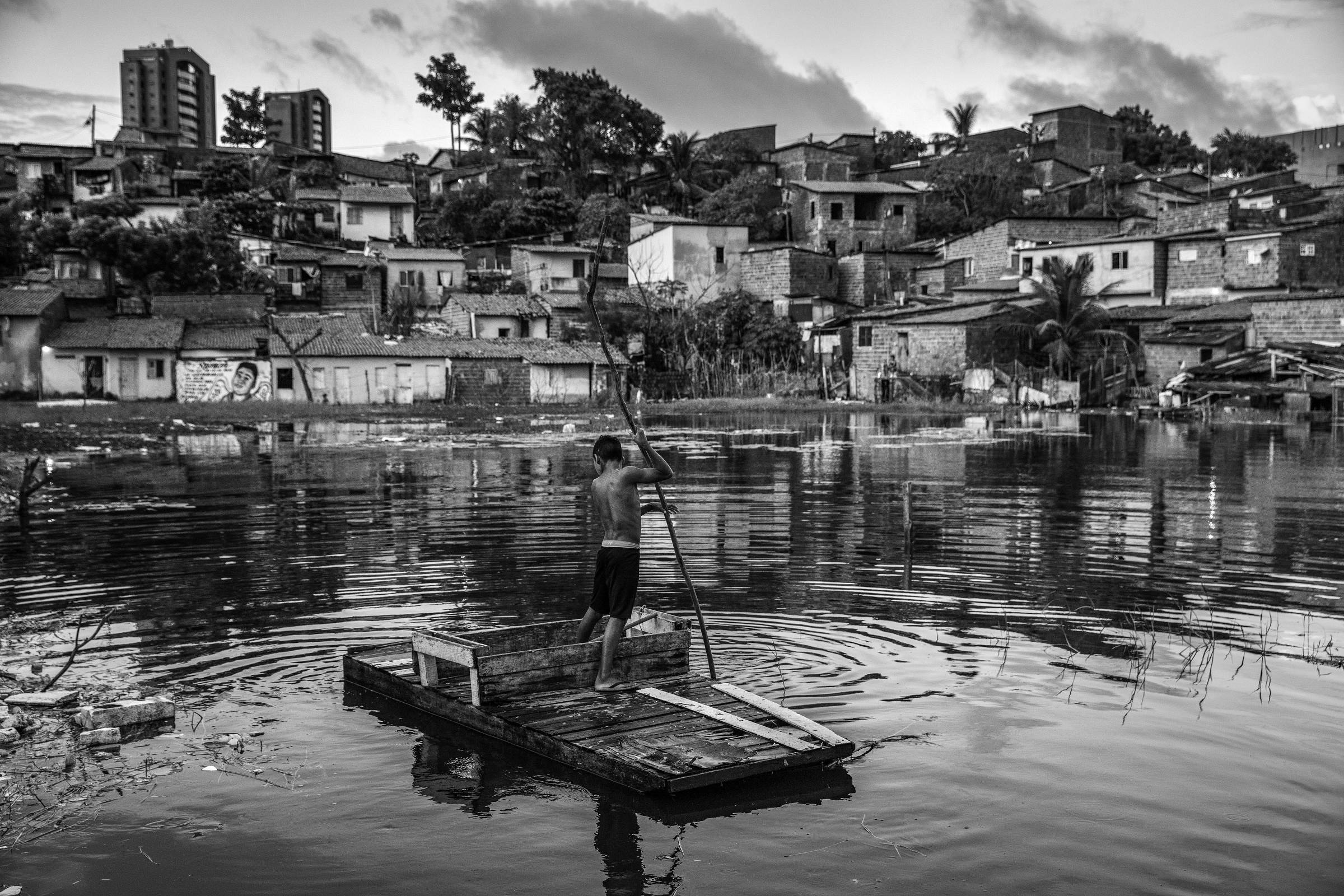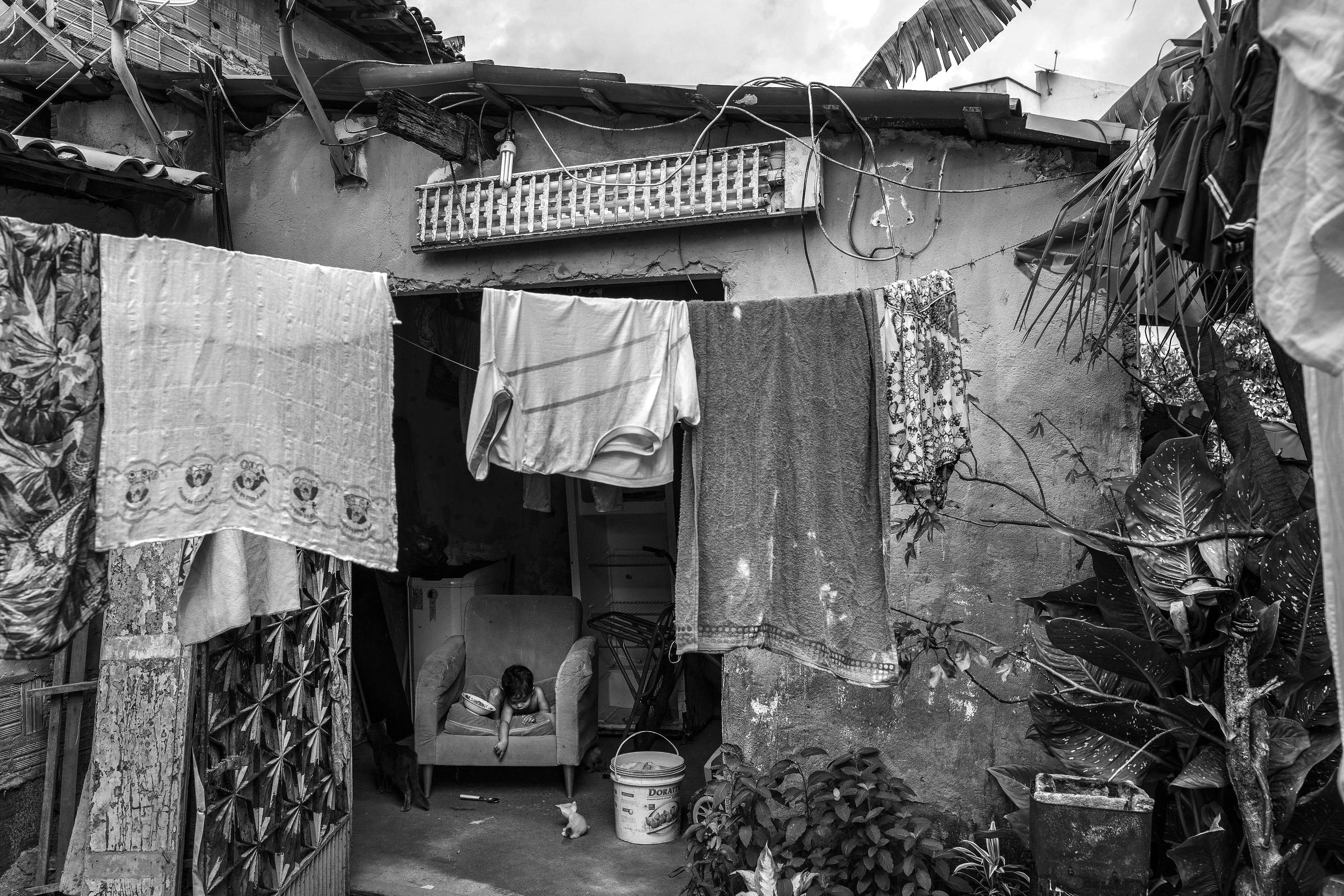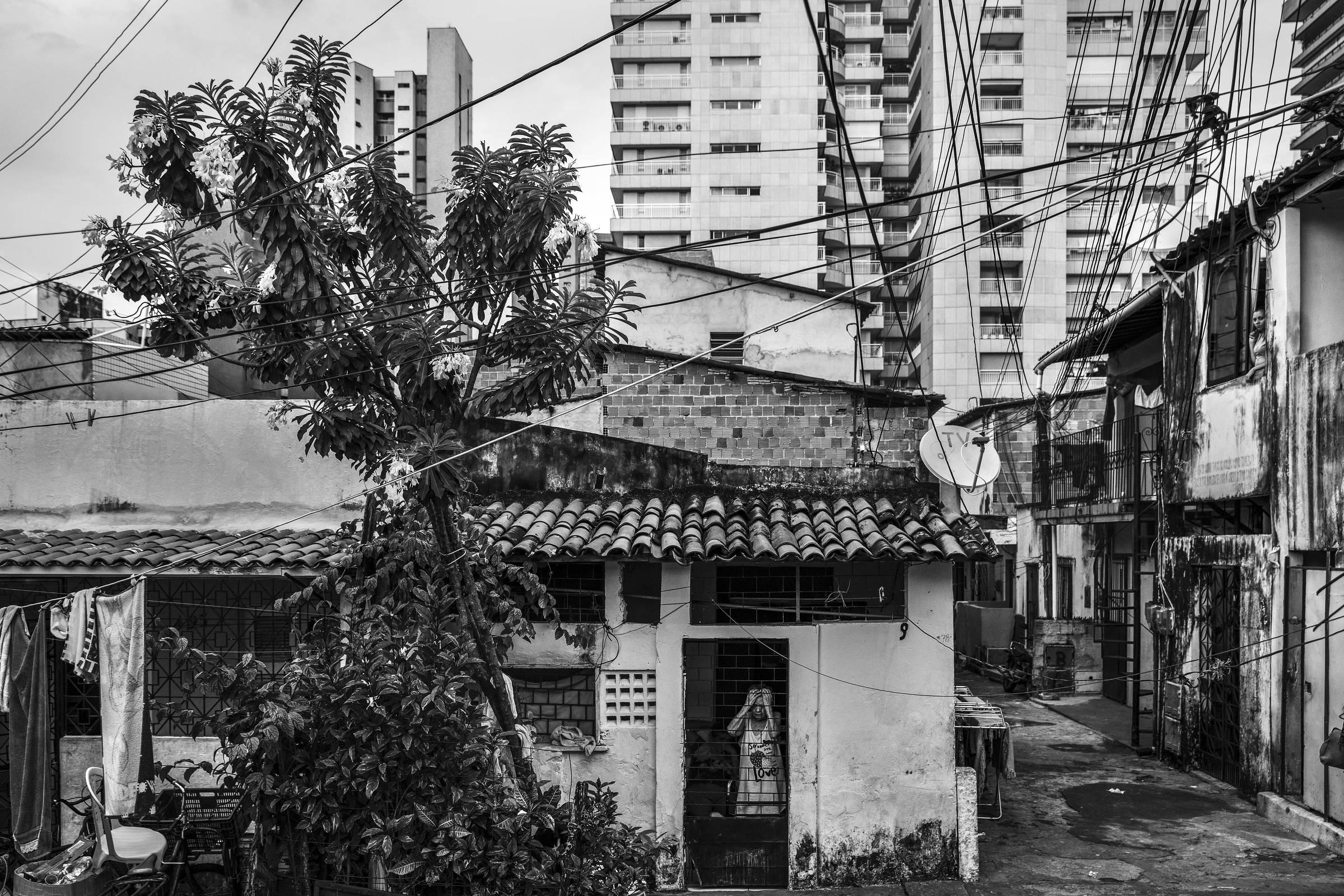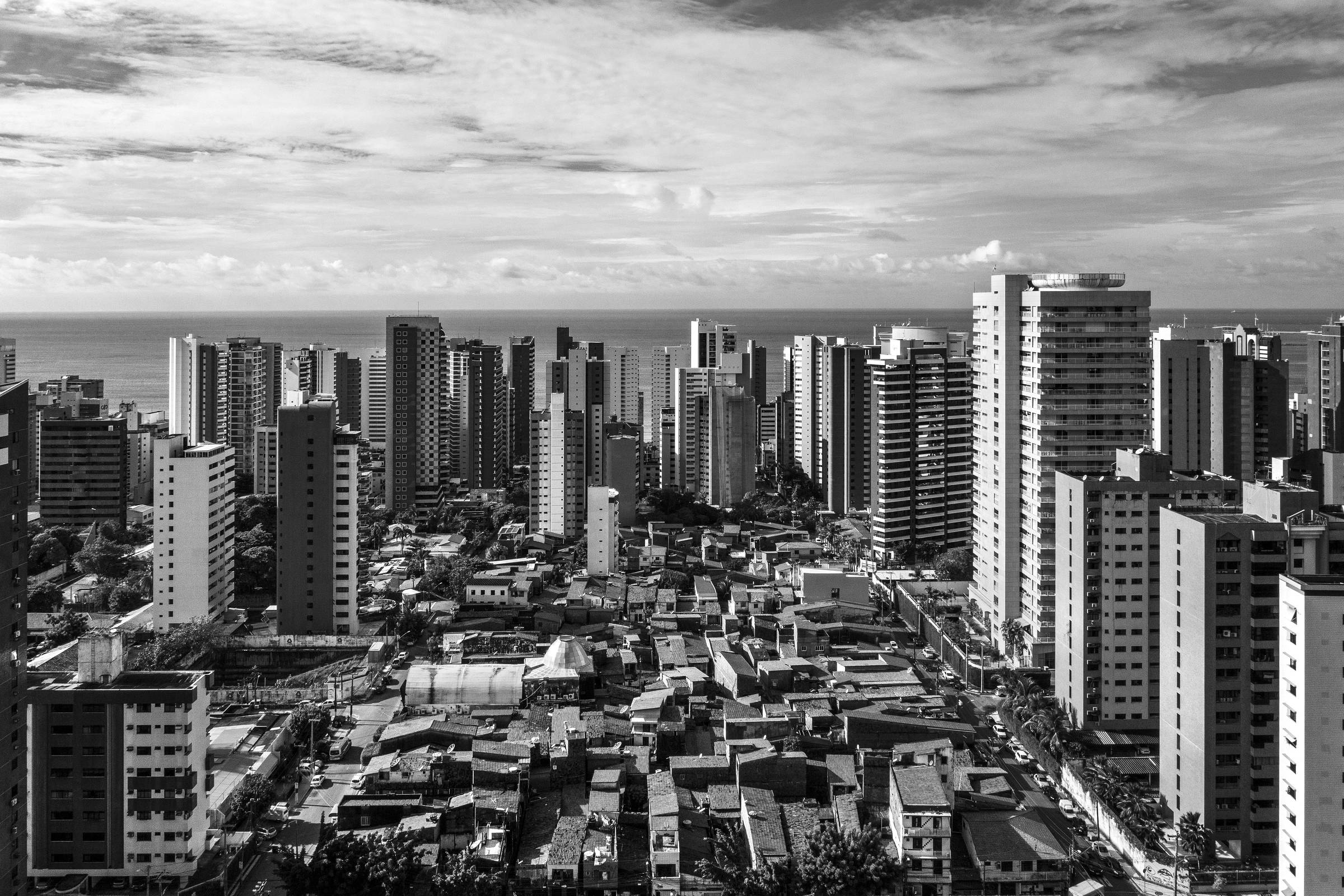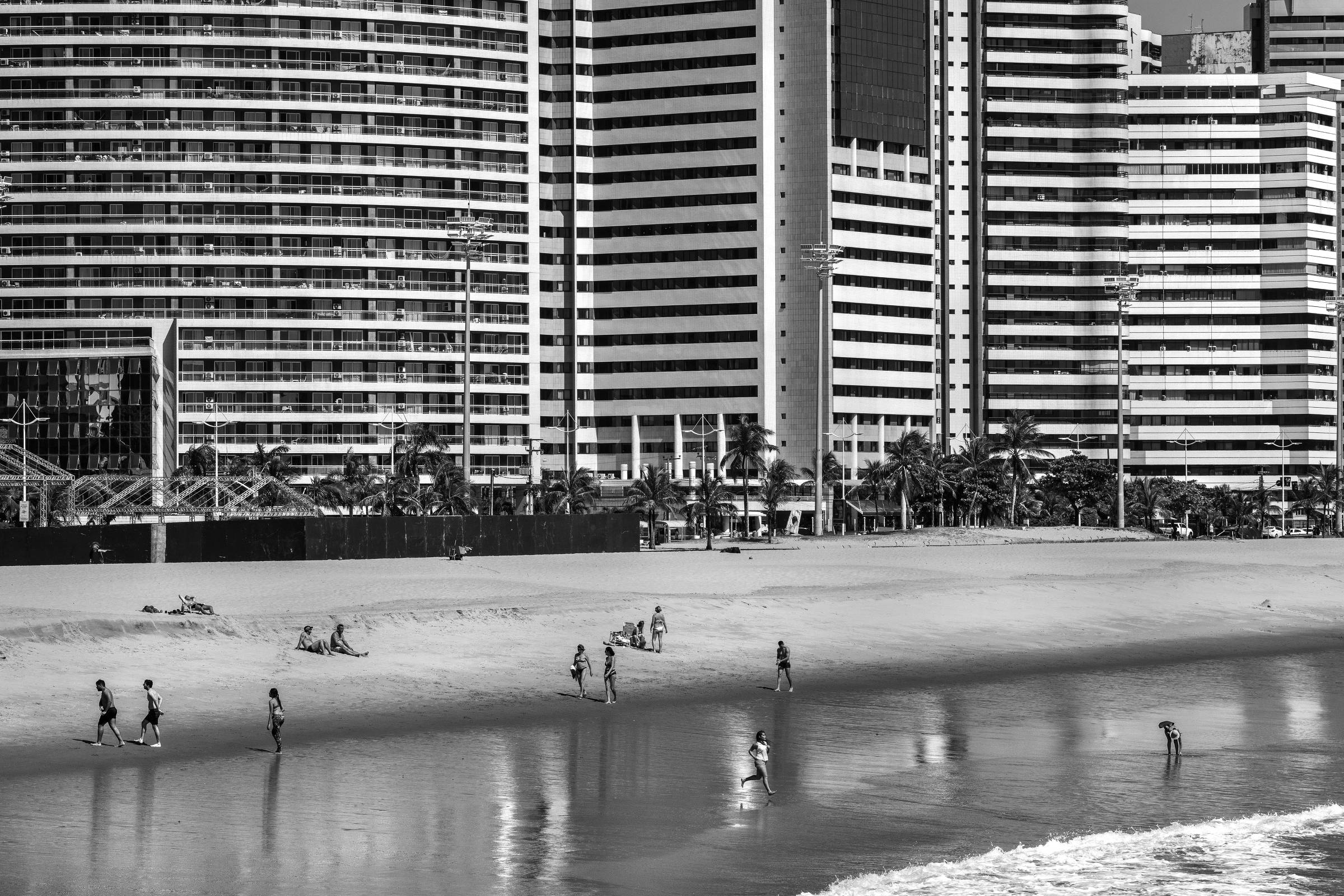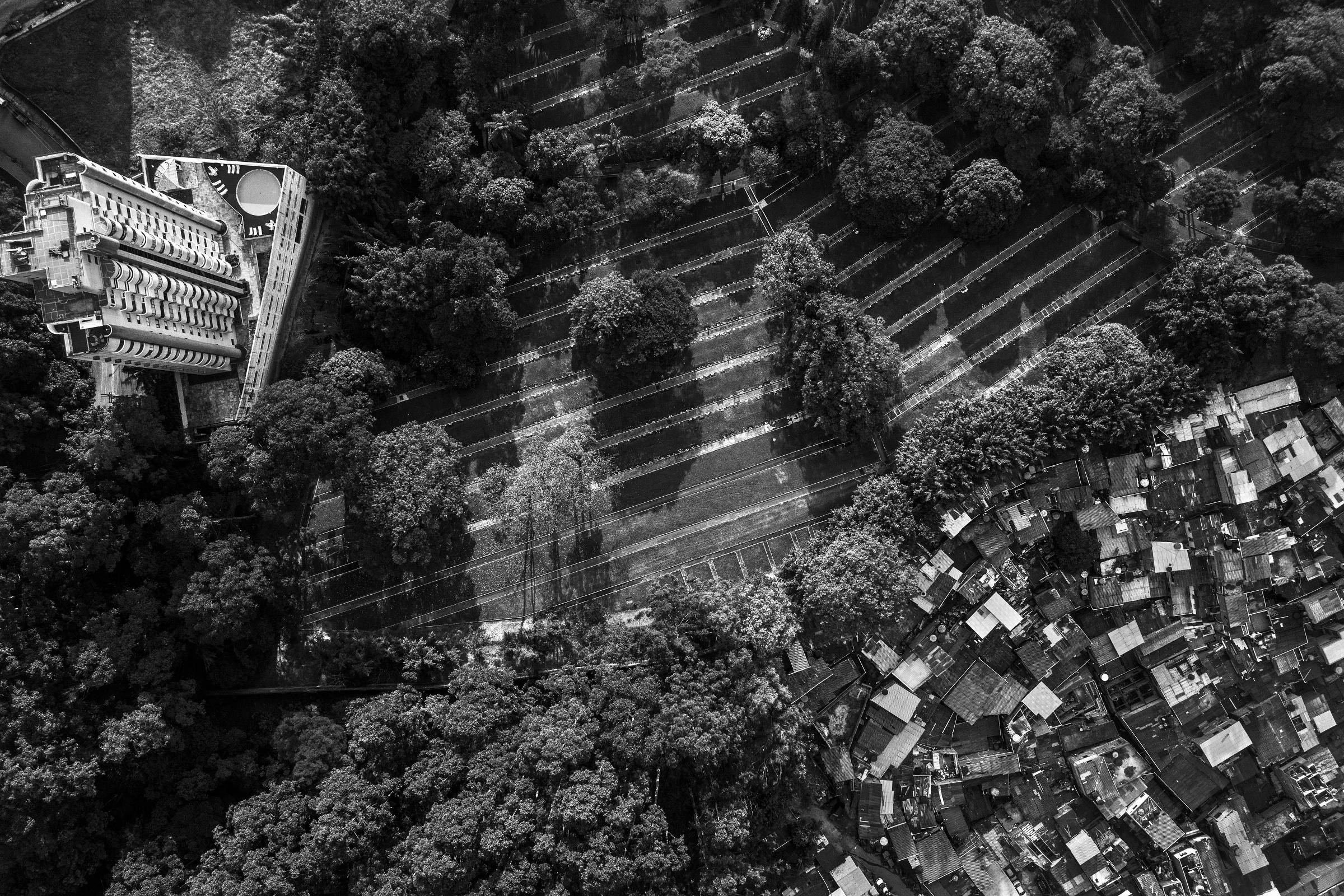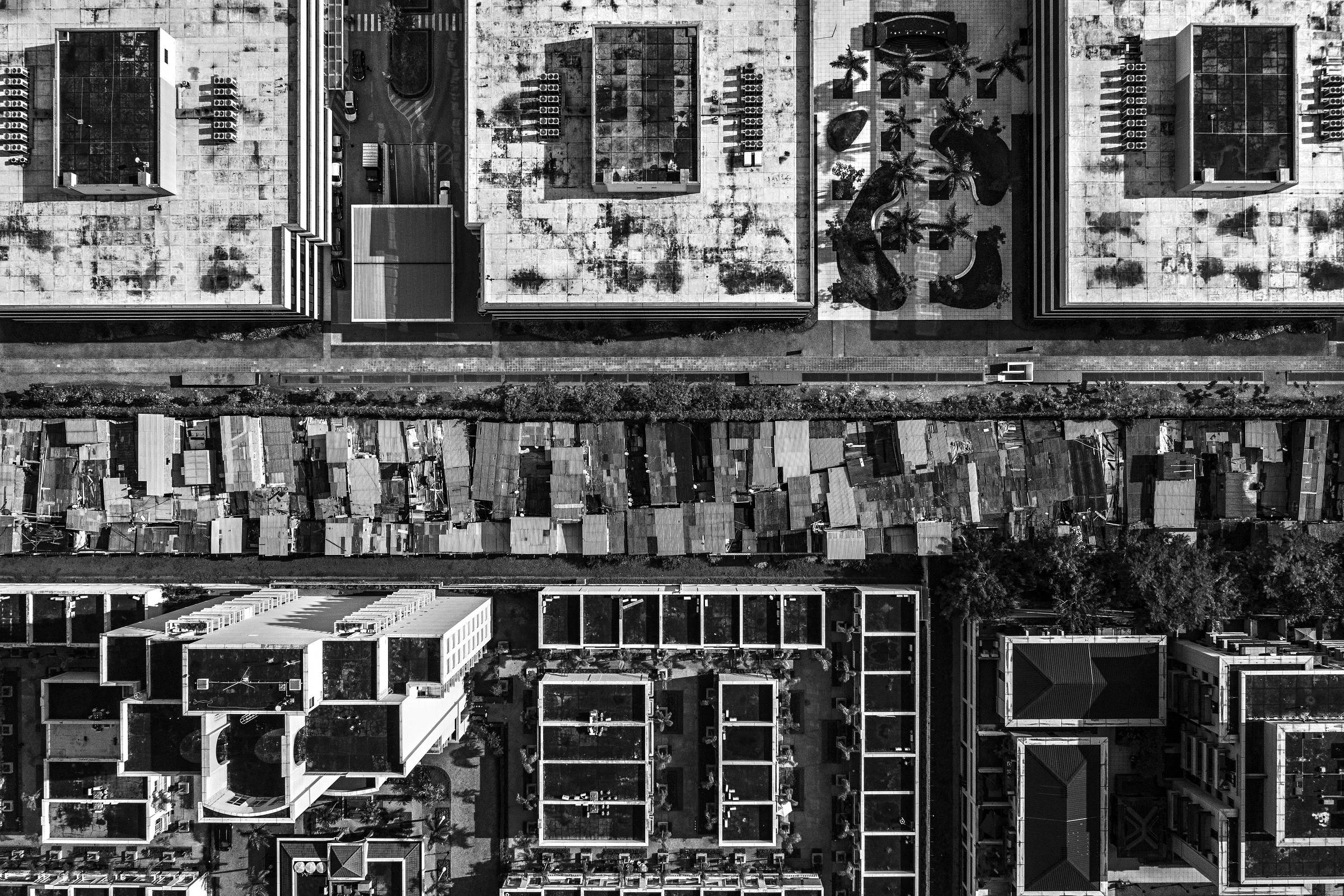Morro do Vidigal, or Vidigal Hill, in Rio de Janeiro, owes its name to Major Miguel Nunes Vidigal (1745-1843), the early 19th century colonial chief of police. Viewed as cruel in his time, he spread terror among escaped slaves and was feared by the poor of Rio de Janeiro. Vidigal received the lands on the hill in 1820 as a gift from Benedictine monks to whom they had been handed down by the Viscount of Asseca, a wealthy nobleman protected by the Portuguese Crown.

From his tiny home at the top of Vidigal Hill, Wallace Guimarães, 28, has a panoramic view of Brazilian social inequality.
It starts with the old tiles covering flimsy shacks, illegal electricity wire extensions and blue cisterns, continuing to the tops of high-rises, luxury hotels and the white beaches of Leblon and Ipanema, and reaching all the way to Sugarloaf Mountain, halfway to the center of Rio.
Looking at this view, two years ago Guimarães decided to try and improve his relative position, investing in Vidigal the largest sum of money he had ever managed to save, R$ 12,000, to open the first of what he hoped would become a chain of barbershops.
Earning as much as R$ 2,000 weekly as a kind of jack-of-all-trades in film and TV commercial production, he opened his business in 2017. The plan was to increase his income and become independent.
"I saw people leaving the D class and entering the C class and thought "one day that could be me". And things were actually looking up. I was able to eat and drink better and was planning on buying a car," he says.
"Then suddenly, out of nowhere the crisis arrived. Work dried up, the barbershop couldn't cover its own expenses and I ended up worse off than before, with almost no work and lots of debt."
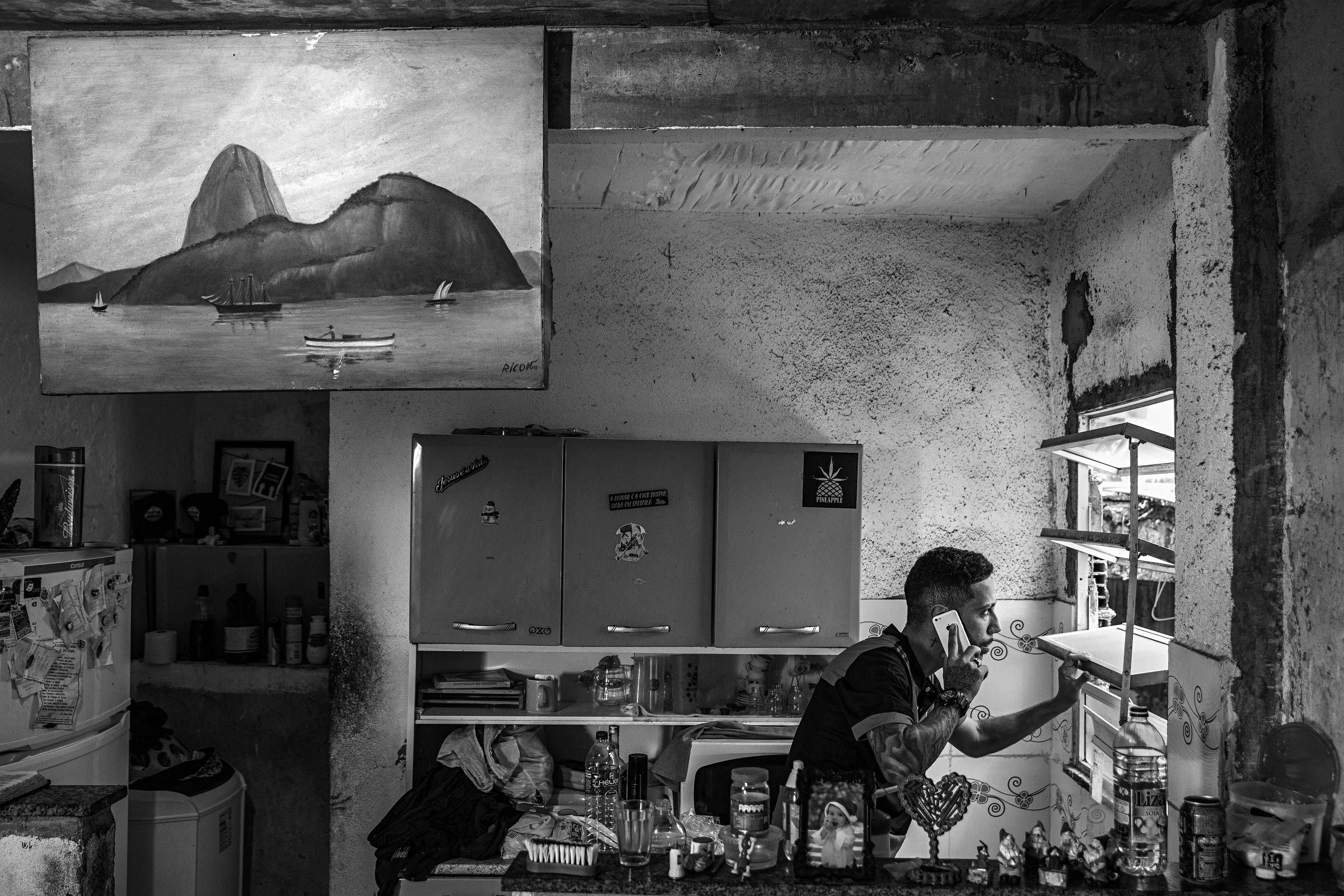
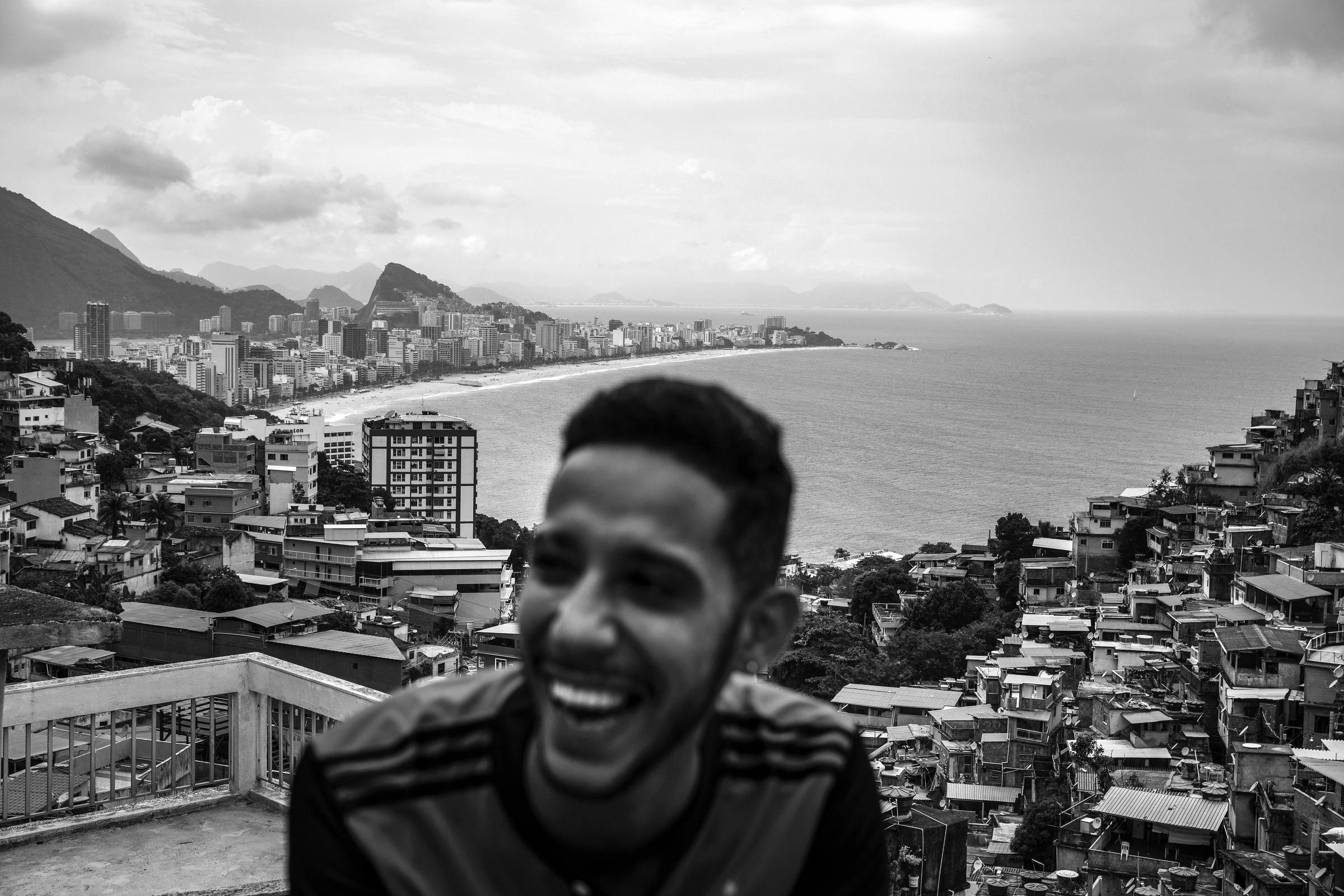
Wallace Guimarães, 28, in his home on Morro do Vidigal, in Rio; views of Leblon and Ipanema beaches from Morro do Vidigal
Guimarães did actually get quite a bit ahead. Most Brazilians, especially the most poverty-stricken, began going under even before the last recession, which lasted from the second quarter of 2014 to the end of 2016.
But he too succumbed and joined the group that has been worst hit: young people, who saw their income decrease around 15 per cent as a result of the crisis.
The average national loss of income accumulated since 2014 has not been so great: around 2.6 per cent. But Brazil is still in the red, even after the recovery seen over the last two years.
"It was a tumble that led the economy to weaken even more, since the poor are the ones who consume a large portion of their income," says Marcelo Neri, director of FGV Social, which analyses these data.
But the heightened crisis in the poorer sectors and in regions such as the North and Northeast not only led to falling incomes and slower economic growth it also caused the income gap to grow for four straight years. This was something that hadn't been seen even in 1989, the year when inequality reached record level.

Local residents on boardwalk in front of the Rocinha slum in Rio de Janeiro
Other data, these provided by FGV Social, give an idea of how much income concentration has increased: post-crisis, the accumulated labor income of the 10 per cent wealthiest in Brazil rose 2.5 per cent above inflation, and that of the 1 per cent wealthiest, 10.1 per cent. Meanwhile the income of the 50 per cent poorest took an 17.1 per cent fall.
This caused the Gini index to rise to 0.629, its highest level since 2012 (the closer it gets to 1, the greater is inequality).
According to the Global Inequality Report produced by the team of economist Thomas Piketty, from the Paris School of Economics, Brazil is the democratic country with the higest concentration of income in the top 1 per cent of the pyramid.
Brazil comes narrowly second only to Qatar, an Arab emirate under an absolutist regime, with 2.6 million inhabitants and ruled by the same dynasty since the mid-19th century.
Based on data combining door-to-door research, national accounts and income tax returns, the report shows that the 1 per cent richest in Brazil (around 1.4 million adults) capture 28.3 per cent of the country's total income and receive on average R$ 106,000 monthly, all sources of income included.
By comparison, the 50 per cent poorest (71.2 million people) receive 13.9 per cent of national income, less than half of the portion captured by the 1 per cent richest.
Even taking into account the 10 per cent richest, Brazil is on par with India and second only to South Africa in the ranking of the countries with the highest levels of inequality.
The approximately 14.2 million adults that make up this decile receive 55.5 per cent of the country's total income.
Coming after Brazil and Qatar, where the 1 per cent wealthiest control 29 per cent of national income, the other countries that concentrate most income (from 20 per cent to 24 per cent) at the top are Chile, Lebanon, Arab Emirates and Iraq.
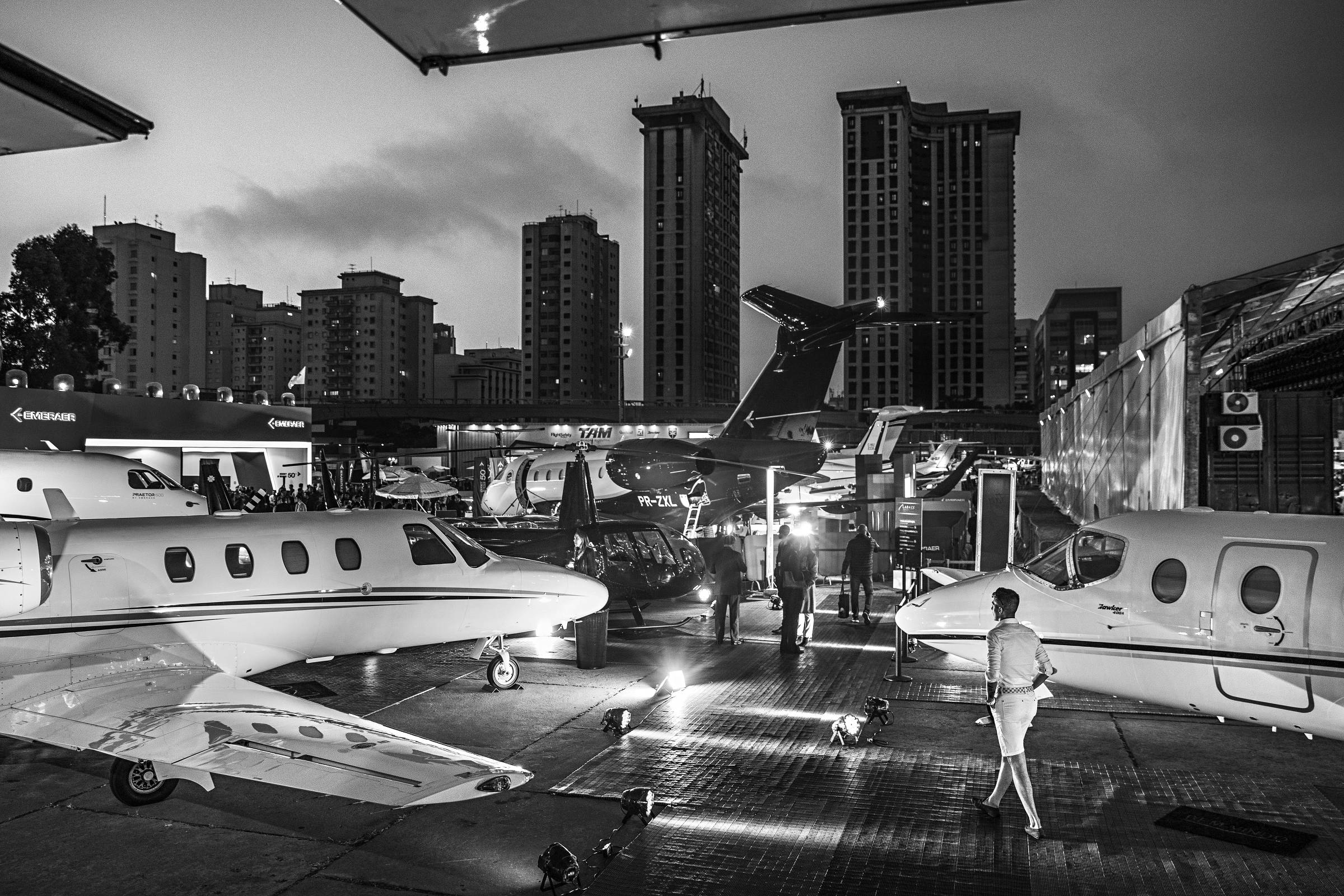
Visitors at executive aviation fair in São Paulo; Brasil has the second largest fleet in the world, behind United States
According to economist Marc Morgan, who analyses data from Brazil for the Global Inequality Report, while the rich and super-rich saw their income grow in Brazil from 2001 to 2015 and the 50 per cent poorest also gained income, the so-called "middle class" did not develop at the same rate.
Thus, Brazil followed a similar tendency to other Western countries, in which the middle classes lost ground, among other reasons due to the rise of Asia and its industrial production based on cheap labour. In Brazil, the middle class participation in the income fell from 33.1 per cent to 30.6 per cent between 2001 and 2015.
The very rich in Brazil have continued accumulating income, especially capital income. And the poorest groups have risen due to the growth of activity in labour intensive and less specialized non-industrial sectors such as construction and commerce.
In between the two, the middle class has been squeezed, among other reasons due to the shrinking of the processing sector, whose participation in GDP fell by half over the last two decades, to around 12 per cent.
Since 2001, according to the report, while the poorest 50 per cent of Brazilians have seen a 71.5 per cent rise in their income and the richest 10 per cent have gained 60 per cent, the middle class (the 40 per cent "in the middle") have seen their income grow less: 44 per cent.
Morgan reckons that the same phenomenon of the shrinking middle class that has helped Donald Trump in the USA and the right in Europe and led the UK to brexit also helped Jair Bolsonaro get elected in Brazil en 2018 in this case, with the addition of the anti-corruption arguments and anti-PT (Workers' Party) feelings that pushed voters to the right.
"Brazil has created a fairly strong line between those who are better off and voted for the PT and the squeezed middle class that lost ground at the highest levels of income distribution," says Morgan.
In São Paulo, Hélio Honório, 60, is an extreme example of the weakening of the Brazilian middle class, which, just as other parts of the world, lost out when Asian countries began producing manufactured goods cheaper than on the other side of the globe.
He faced poverty in his youth, but after much hard work managed to open a small handbag factory in São Paulo that by the early 2000s employed 22 people.
"But once imported goods started to arrive, everything fell apart. Their price in stores was my production cost," he recalls. "Everything began coming from China and everyone went bankrupt."
Adapting to the change, Honório himself began selling Asian imports on 25 de Março street, and was able to make around R$ 2,000 on especially good days.
"I moved to a three bedroom flat and bought two cars in instalments. I had a good life, travelled around and ate in restaurants. But then came the crisis and everything went under."
By 2011 Honório and his wife had moved to a studio flat in a low-income area of downtown São Paulo. Targeted by loan sharks, his partner went into debt and Honório ended up losing everything: what little capital he still had and his business in the city's biggest cheap shopping district.
Today he is a street vendor on a corner in Vila Olímpia, in São Paulo, making at most R$ 2,000 a month. Divorced from his wife, he rents a room in the Funchal slum, a cluster of frail plywood shacks squeezed in the midst of the area's luxurious high-rises.
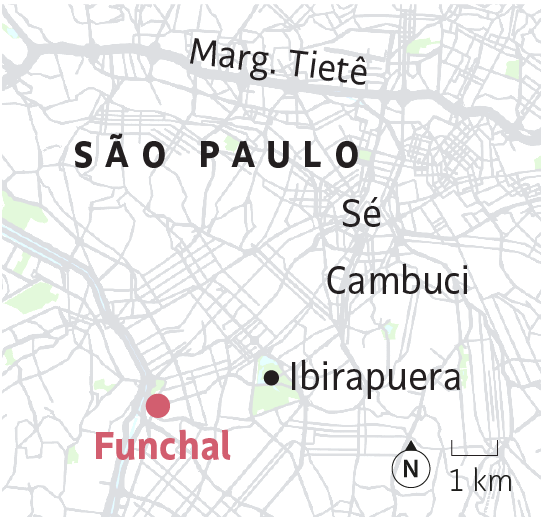
As a street vendor, Honório is part of the group that has grown most during the crisis: the so-called "conta própria", or "on their own" (self-employed) now account for 24.1 million of the 93.3 million Brazilians in work.
It is partly thanks to them that the current unemployment level, at 12 per cent, is no higher in a country where 12.8 million are jobless.
Despite his losses, Honório has actually managed to maintain a level of income close to the Brazilian average. That has not been possible for the millions of people who have sunk with the crisis.
According to data provided by FGV Social, the total number of people who have fallen into extreme poverty since 2014 and now live on less than R$ 232 monthly has increased by 33 per cent.
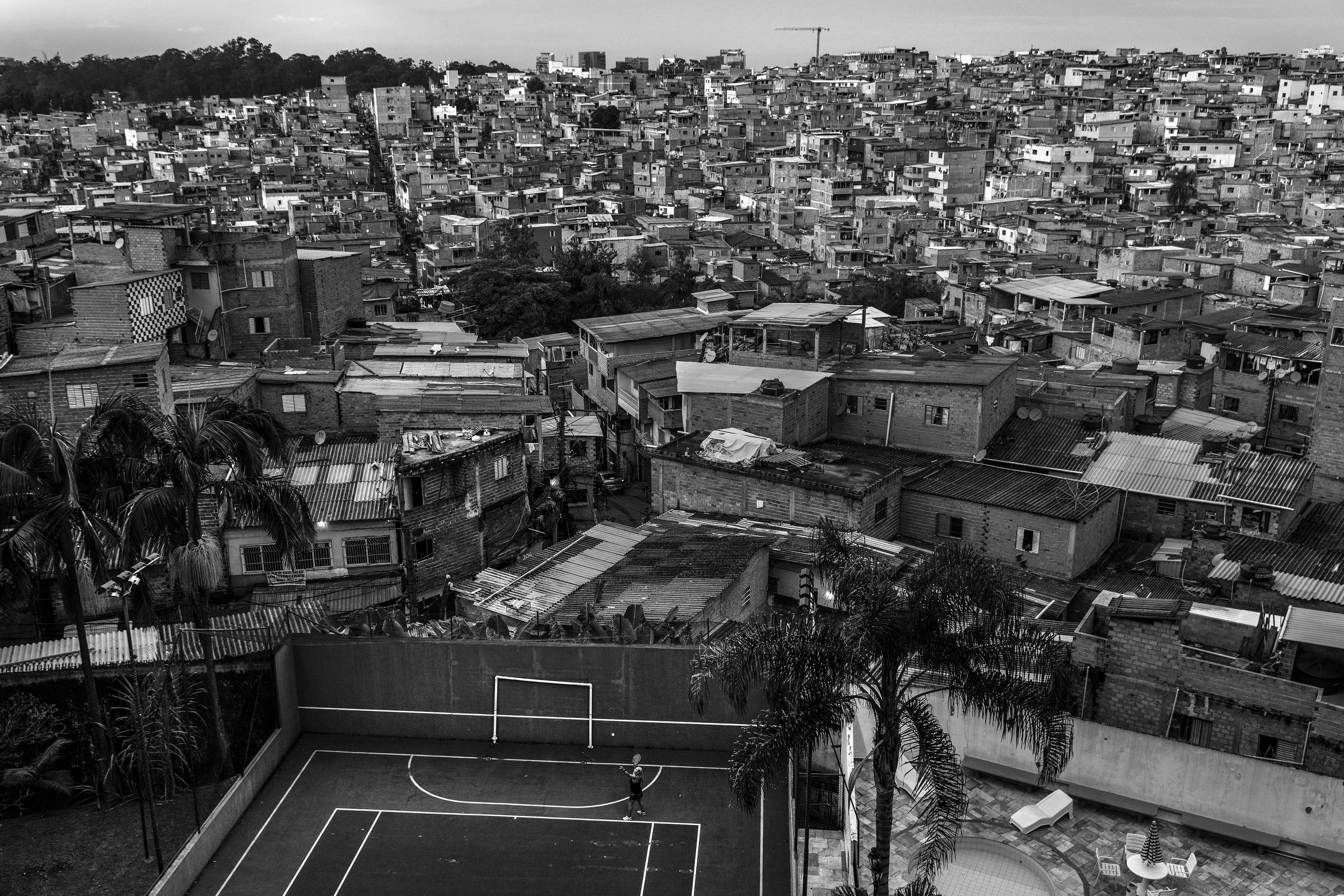
Woman plays tennis in gated estate with swimming-pool beside the Paraisópolis slum in São Paulo
With these added 6.3 million people, the number of Brazilians living in extreme poverty has risen to 23 million equivalent of the population of Australia or 11 per cent of the Brazilian population.
Hélio Honório, in São Paulo, and Wallace Guimarães, in Rio, are cases in point of people whom Professor Fernando Burgos, of the business management school FGV-SP, describes as having passed through the "revolving door" of Brazilian inequality.
"It"s as though they had come in through the door, seen the hotel lobby and felt the air conditioning. But the door kept on turning and they came out again."
In Burgos' view, despite the income increase of the poorest Brazilians in the 2000s and the reduction of poverty witnessed over the last few decades, Brazil's social policies and macroeconomic conditions haven't tackled what he calls the "other dimensions of poverty", the structural ones.
In this sense, Brazil remains a country with historical barriers, hard to overcome, that limit improvements in the economic conditions of its poorest citizens whose social mobility is also very low.
"If I said "let's try to design a country that will have tremendous, extreme inequality and where you won't be able to change this easily", I wouldn't have been able to come up with a better idea than Brazil," says Naercio Menezes, coordinator of Insper's Center for Public Policies.
Inequality in Brazil, according to Burgos, is high, persistent and bound to a vicious circle that begins at birth.
"Those who are born poor start life in an unfavourable environment, without sanitation, with many children living in poverty and parents without the level of education needed to understand what is important," says Menezes.
This was the case of Wilton da Cruz, 24, interviewed by Folha during a rally held on Avenida Paulista, in São Paulo, in support of President Jair Bolsonaro.
Having finished middle school in 2012, Cruz has not so far had a chance to go to university, "for financial reasons".
But from the age of 16 he has worked as a salesman, distributing leaflets for R$ 20 a day, and, more recently, with telemarketing. He is unemployed at present and has been so for a year, despite having taken a technical course on plastics.
Because of not having gone to college, his future income will be limited: a university degree usually ensures its owner twice the income of someone who has only a technical middle school degree.
The good news is that from 2000 to 2018, the number of Brazilians with higher level education rose from 7 per cent to almost 20 per cent; many of them are blacks who entered college thanks to affirmative action quotas. In the case of an economic recovery, it is likely they will do better and earn more.
However, differently from European countries and the US, where inequality has been growing due to changes in productive structures, in the view of experts Brazil still ensures many privileges to minorities that are paid with public money and a high level of corruption. All this is added to the problems it has had from the start.
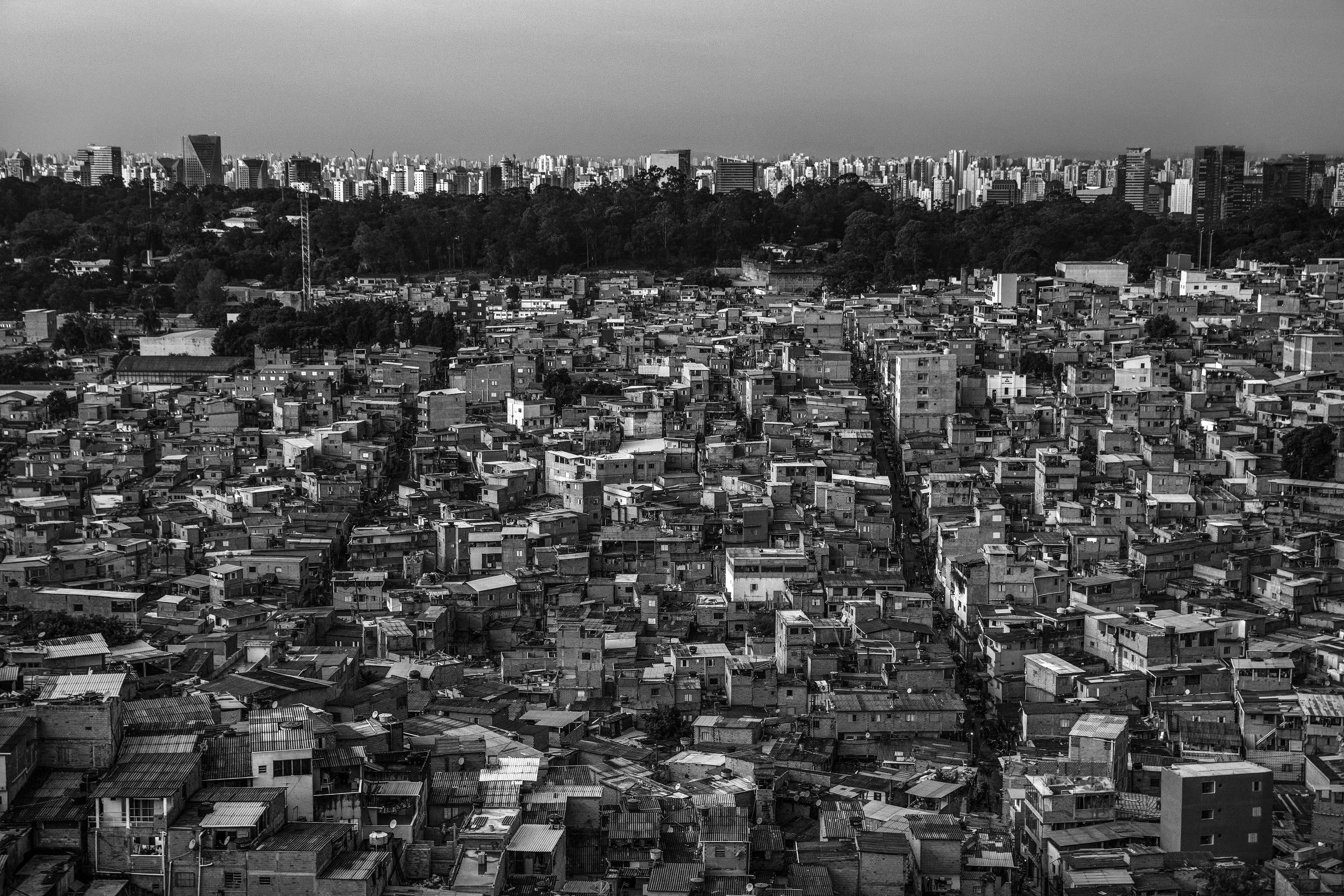
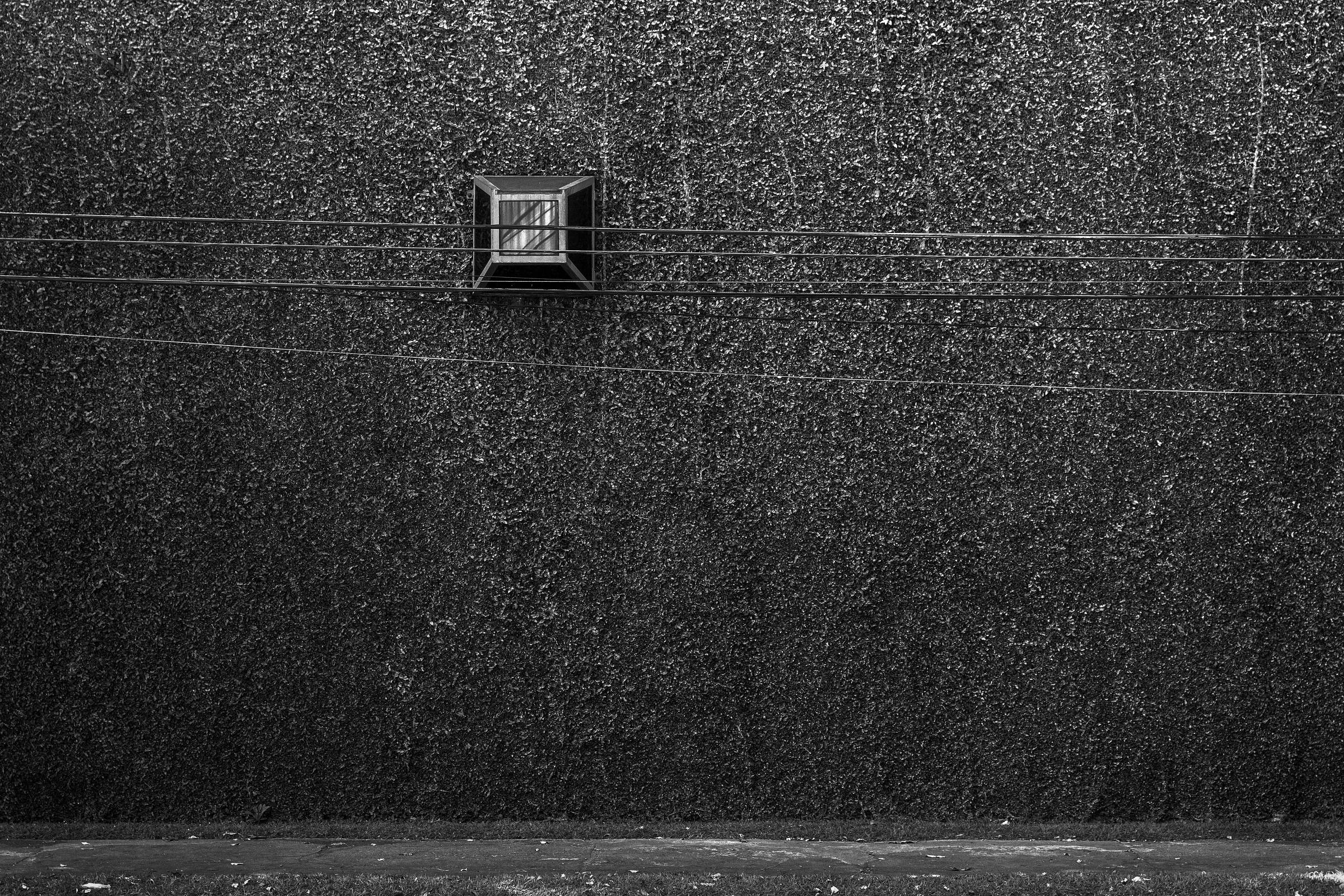
General view of Paraisópolis slum, in São Paulo; above, safety cabin in a mansion in Moumbi, high-end area close to the community
These include the legacy of a system based on slavery, which still maintains blacks in the lower socio-economic levels; regional domination patterns; a patriomonialist system that makes a point of seizing state resources; social policies that benefit those who least have need of them; and a backward tax structure that charges proportionally much more from those who earn less.
There is little openness to trade and competition between companies, many of which are involved in corruption the crimes reported in the Car Wash scandal alone involve R$ 6.4 billion paid in bribes.
For historian Lilia Schwarcz, co-author (with Heloisa Starling) of "Brazil: A Biography", besides having been the destination of almost half of the 12 million blacks who left Africa as slaves between the 16th and 19th century and having been the last country in the Americas to abolish slavery, in 1888, Brazil never created policies to integrate the freed slaves.
This fact has contributed to maintaining inequality to this day. Despite representing over half the population, only 40.3 per cent of black and brown people over 25 have finished compulsory basic education, for instance.
"Brazil was an exploitation colony whose economic structure was determined by external demand and reality. For this reason we are to this day a country of great estates and great dominations," says Schwarcz.
Luiza de Marillac Ferreira, 52, is an example of the weight of this past. Granddaughter of a black woman whose parents were slaves and a Portuguese man, she lives in the same place where her grandparents settled many decades ago, in the community of Poço da Draga, in Ceará.
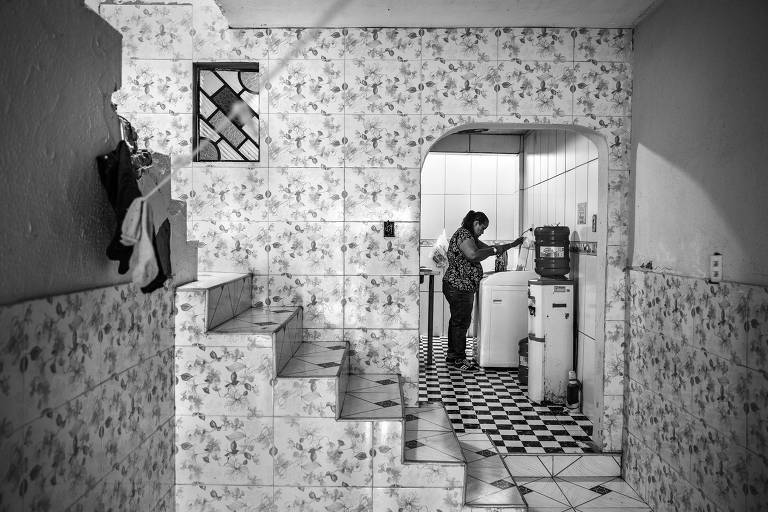
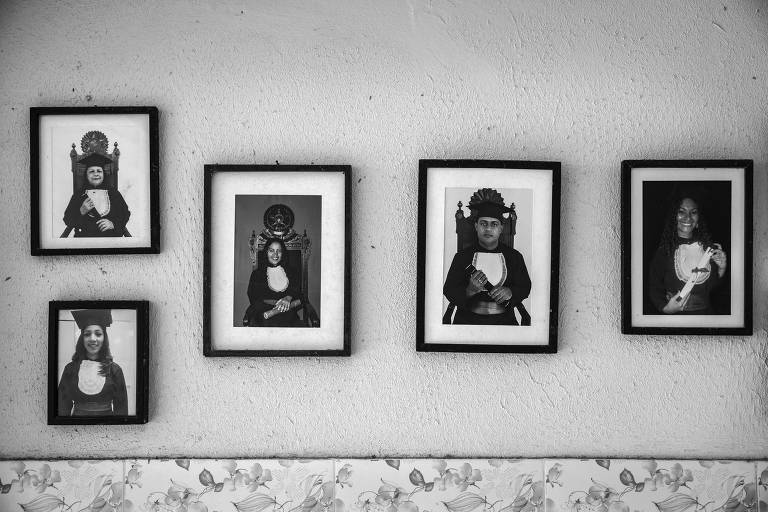
Luiza de Marillac, 52, lives in the same place where her grandparents settled, in the community of Poço da Draga, in Fortaleza, Ceará. Below, pictures of her children"s graduations
The area, a former fishing and dockworkers village, is an island of poverty, without public facilities or sanitation, but is surrounded by businesses and bars close to the famous Iracema beach, in Fortaleza.

Marillac is one of the people who has gone through the "revolving door" of inequality.
In 2002 she took a nursing course and got two jobs. At one point she and her husband, a stonemason, were making R$ 3,000 a month together.
At that time, Marillac bought several domestic appliances and invested in her four children's schooling, three of whom benefited from federal programs.
She lost one of her jobs in 2008 and the other one in 2014. In 2015 it was her husband's turn to become jobless.
"I began selling snacks in construction sites, but it wasn't enough. I had to ask my mother for help, as she receives a retirement pension," she says.
Two of her daughters have now managed to leave the country, and the family is living with the R$ 1,072 monthly Marillac receives doing community outreach work for Fortaleza Town Hall.
Largely due to their historical legacy, the poor states of the Northeast of the country still concentrate the greatest levels of inequality, the largest percentage of blacks, some of the largest agricultural estates and the worst jobs in the country.
Meanwhile, patrimonialist income concentration has various facets to it: among others, the high salaries and pensions paid to civil servants; R$ 376 billion in waivers and tax subsidies to some sectors this year alone; state pension funds that finance controversial projects, and even resources for public universities at the expense of primary education.
The salaries paid to civil servants in Brazil are higher, on average, than those of equivalent workers in the private sector. In Brasília, in the Federal District, that concentrates the greatest number of civil servants, average earnings are almost 90 per cent higher than in the rest of the country.
For economist Cláudio Hamilton dos Santos, this disparity highlights the disconnect between Brasília and the rest of the country.
He believes the proximity of federal civil servants to the administration in Brasília strengthens this group's bargaining power when it comes to obtaining wage increases, benefits and pensions that are almost always above the cap of R$5,839.45 paid in the private sector.
All this is paid mainly by the annual transfer of R$ 14 billion from the Union to the government of the Federal District. Of this amount, equivalent to almost half the annual budget of the Bolsa Família program and more than the individual net income of 14 states, 90 per cent is spent on personnel.
Thus, the community of Sol Nascente, in Ceilândia, less than 30 km from Praça dos Três Poderes, in Brasília, can be seen as an icon of Brazilian inequality, with its 120,000 inhabitantes living very close to the areas with the highest level of average pay in the country, the government of the Federal District.
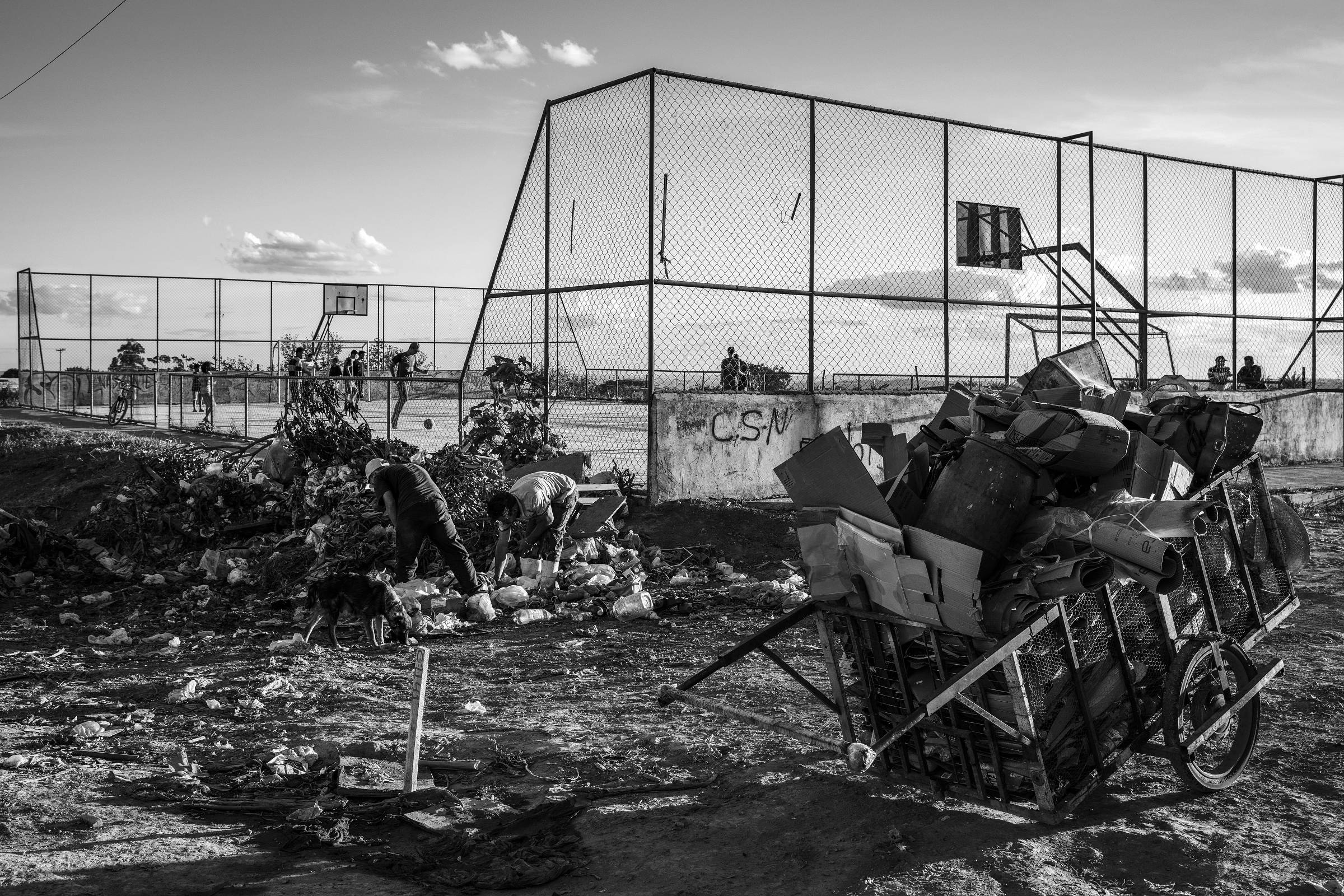
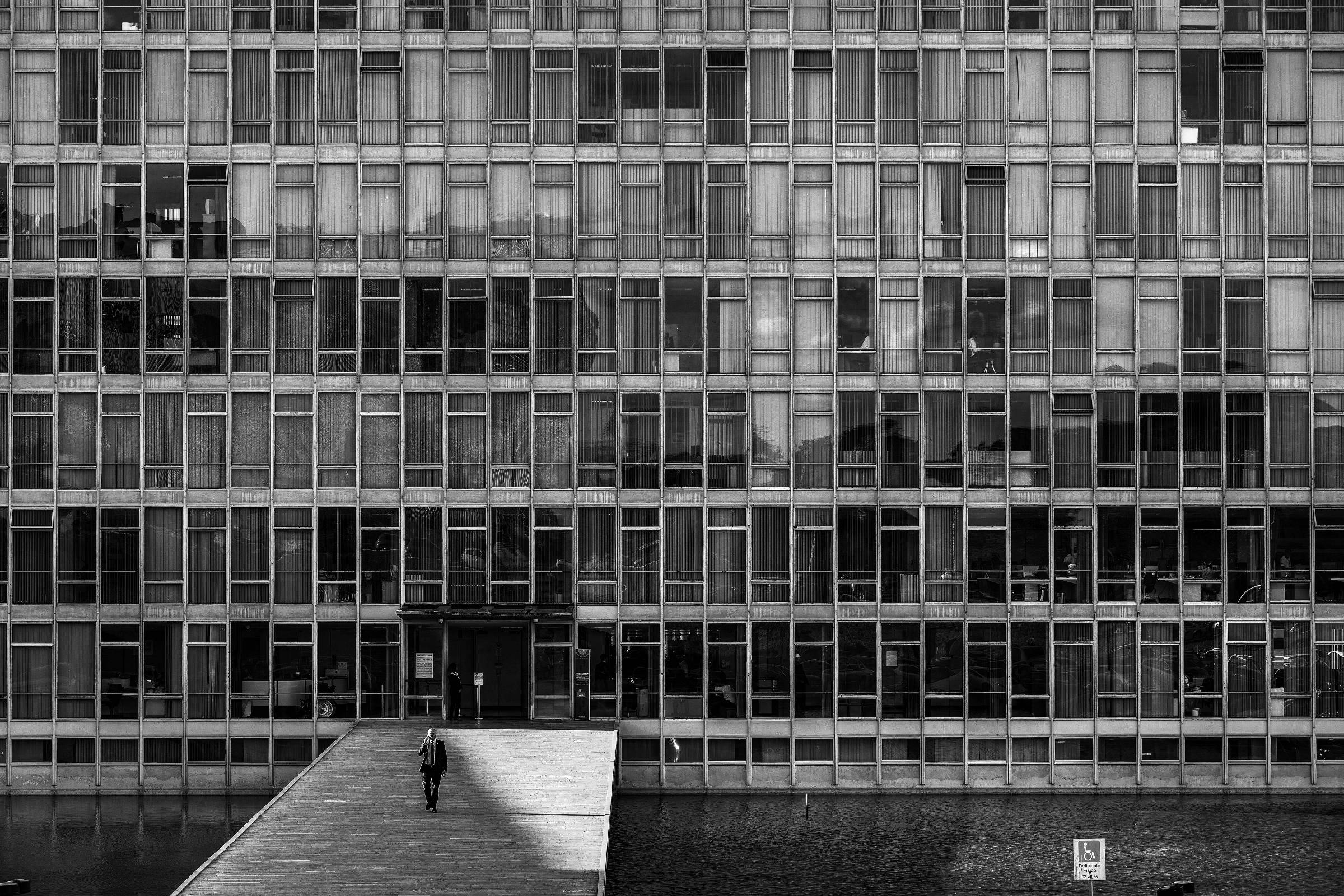
Recyclable waste pickers in the Sol Nascente community, in the Federal District, and public building in Brasília, where civil servants earn above the national average
In Sol Nascente, there are almost no public facilities. Most of the houses have no sewage system or running water, and many of the streets are unpaved, with trash strewn around everywhere due to the infrequent garbage removal.

For lack of any alternative, it was in Sol Nascente that Marcílio Sales, 49, managed to settle when he arrived in Brasília in 1997, after being a farm labourer in Piauí.
Initially he worked with hand crafts, but later was employed by a cleaning and maintenance company outsourced by the University of Brasília, where he learned to read and write in a literacy program.
With his monthly salary of R$ 900 and some other odd jobs, Sales bought a plot in the community and built his home. First of plywood, later of bricks.
But in 2017 he was fired after 20 years working at the university. "Nothing has turned up since then," he says.
With no salary, Sales gave up part of his activities in a project he had created to provide children with extra tutoring and their mothers with sewing lessons. This has helped worsen conditions in the community.
"Without my income, everything went under: myself, the project, everything. We are having a terrible time," says Sales, who doesn't get any type of state benefit.
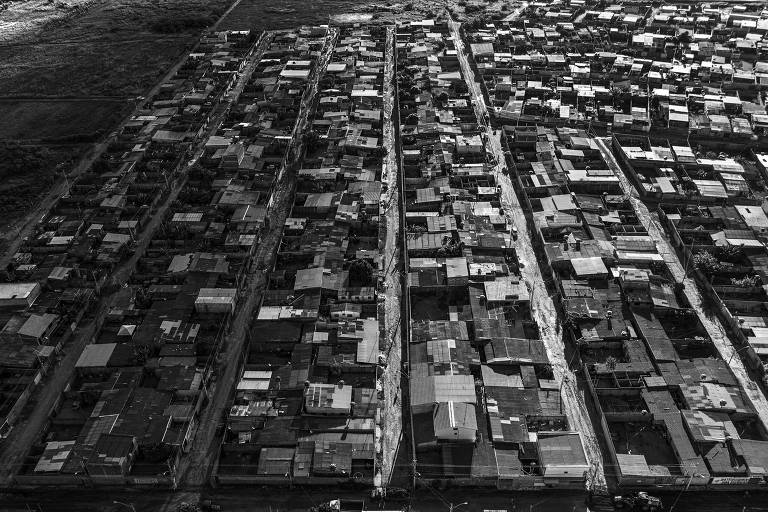
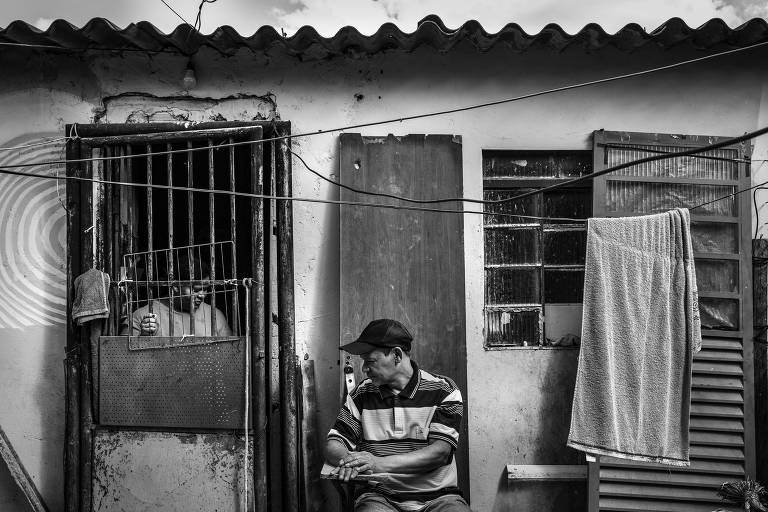
Marcílio Sales, 49, was a farm labourer in Piauí but settled in Sol Nascente in 1997
The chief economist of the Ayrton Senna Institute, Ricardo Paes de Barros, says the amount Brazil spends on its various social policies is far from negligible. The problem, for him, is how the money is spent.
"Brazil has built a giant social protection network. But we spend too much on transfers to various programs and not enough on equal opportunies for everyone to start from the same point," he says.
"The most intelligent thing to do would be to join all this in one social protection network, instead of many different programs."
According to data provided by the IDB (Inter-American Development Bank), Brazil spends about 25 per cent of its GDP in the social area. Among Latin American countries, it is second only to Argentina in this regard.
But Brazilian spending is of poorer quality, mainly due to pension expenses that benefit older people. According to the bank, the country spends seven times more on its elderly than on young people, while the average in the region is four times more.
The IDB considers that no less than 75 per cent of public money transfers in Brazil can be classified as "pro-rich", far from the ideal goal of equalizing the starting chances of children and young people.
The international organization sees Bolsa Família as by far the best and most effective program to fight poverty and improve income distribution in the country.
Of the 70 million Brazilian households, 9.5 million are served by the program, which has an annual budget of R$ 31 billion, equivalent to less than a tenth of the the tax breaks provided to several sectors.
In total 14 million women (half of them living in the Northeast) receive on average R$186 a month on condition they keep their children in school and take them to health centers two things seen as essential to fighting inequality "at the starting point".
Economist Armínio Fraga, former governor of the Brazilian Central Bank, considers Bolsa Família a "fantastic" program.
However, he says, in addition to it being insufficient to lifting people out of a very low level of income, Bolsa Família has become concentrated in the hands of leaders in Brasília who can use the benefits for political ends during electoral cycles.
For the majority of experts, however, the key to fighting inequality is ensuring a return to growth, if only because it will be needed to continue paying for and broadening income distribution programs such as Bolsa Família.
As in the 2000s, growth would once again enable upward social mobility through work.
Between 2004 and 2014, according to FGV Social and IBGE data, almost 80 per cent of Brazilians" income increase came from more and better jobs.
When that long cycle came to an end, from 2015-2016 on, when unemployment rose, 4.1 million families descended into classes D and E and began receiving an income ceiling of R$ 2,370, according to Tendências consultancy.
This rapidly eliminated almost all the upward social movement that took place from 2005 to 2012, when the increase in incomes lifted 3.3 million people out of the base of the pyramid.
With a return to economic growth, even a moderate return, almost 4 million families would be able to once again rise to classes C, B and A by 2022. And they could once again represent almost half of the population.
Translated from the Portuguese by Clara Allain
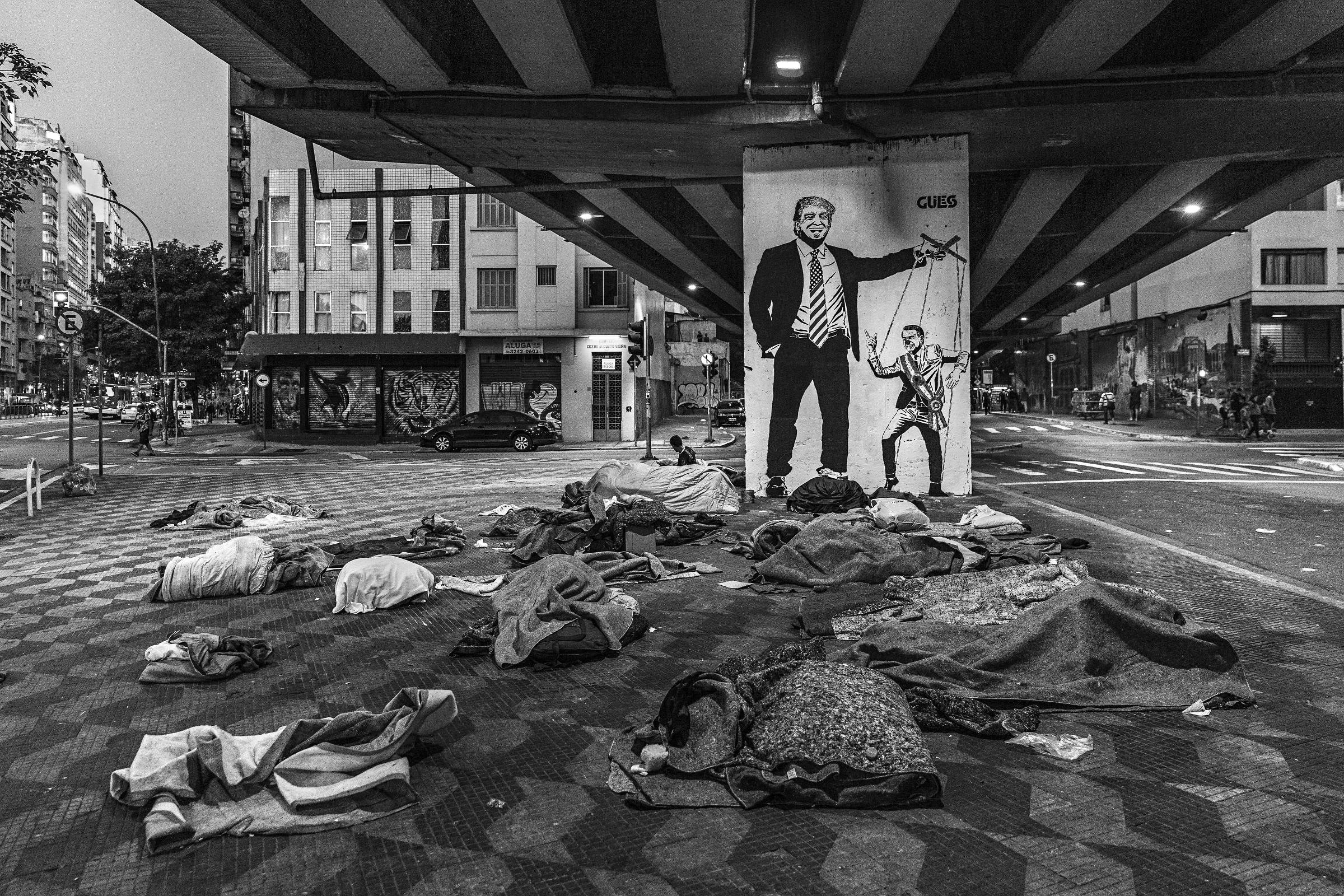
Homeless people"s belongings in São Paulo under an overpass with graffiti showing Donald Trump playing with Jair Bolsonaro as his puppet
